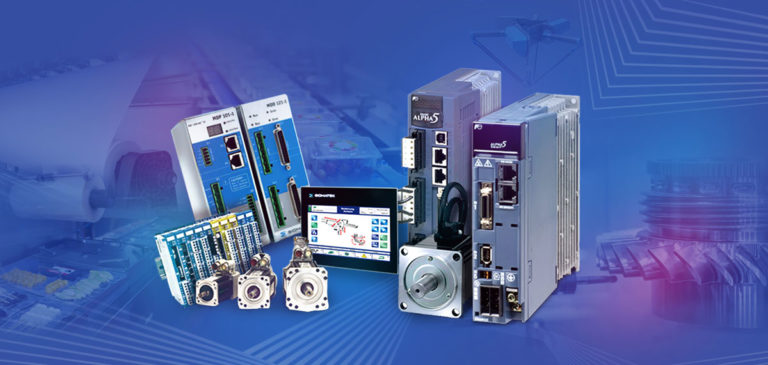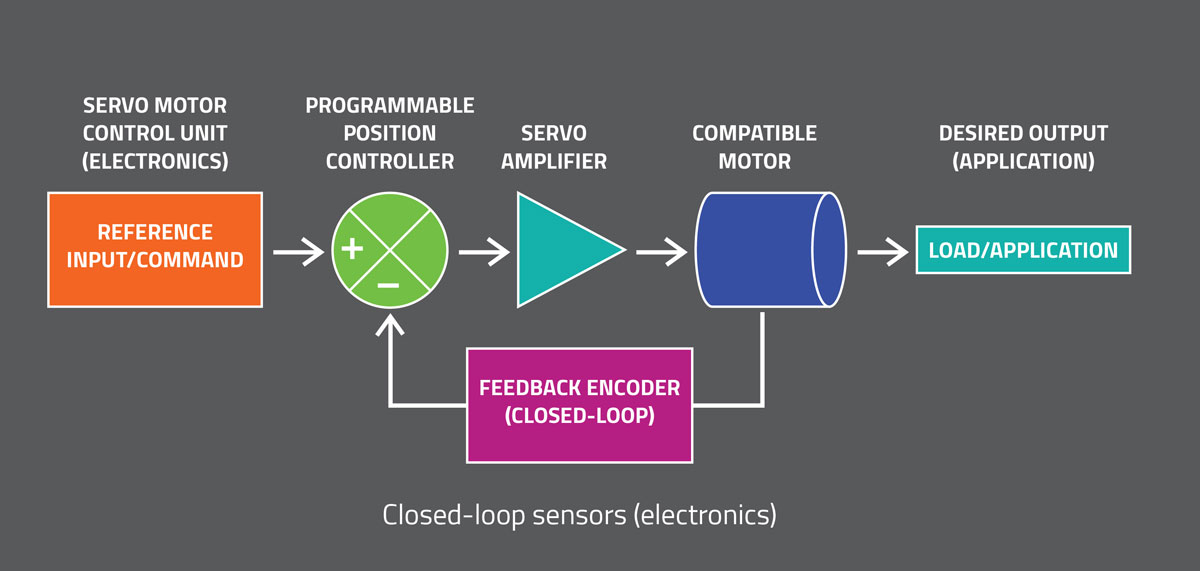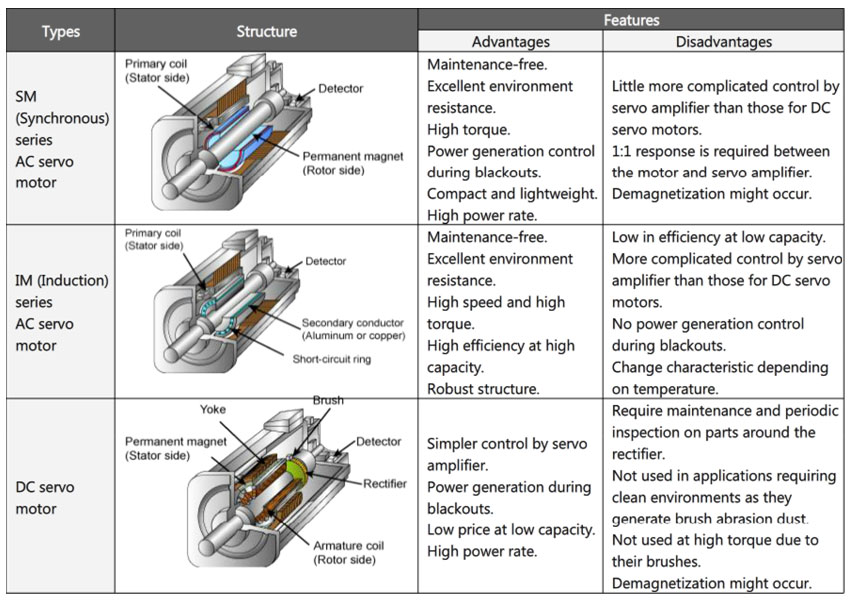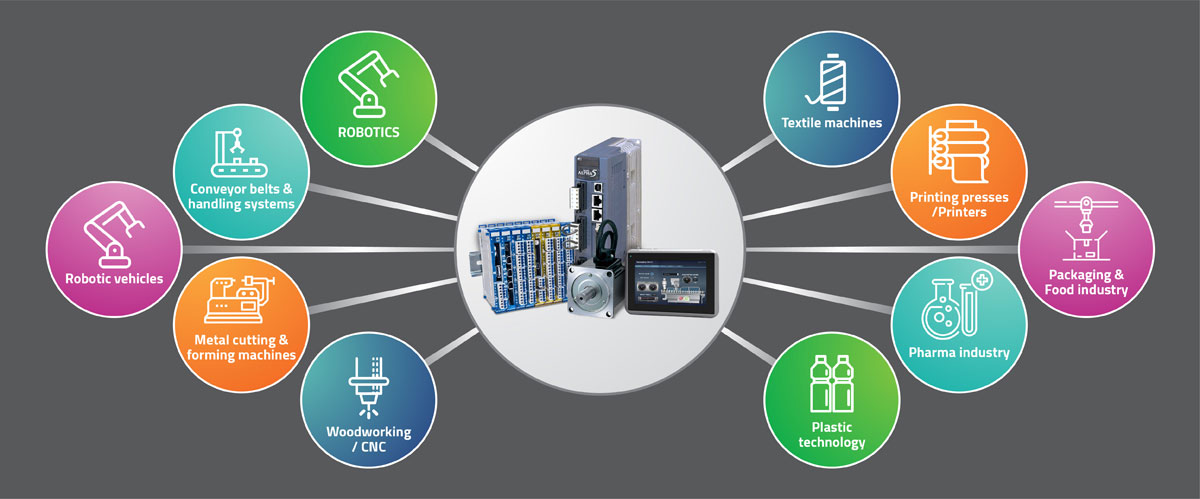
BASICS OF SERVO MOTOR CONTROL
Ever wondered how metal cutting & forming machines provide such accurate motion for milling, lathes, etc.? Or how a robotic vehicle in military application controls bomb detonation with careful precision? Or how do spinning machines in textile factories operate with unfailing accuracy and consistency for repetitive tasks? It’s all thanks to the precise control of servo systems.
Let’s start with a fundamental question: What is a servo?
Technically, the term ‘servo’ refers to a function and not a specific device, although the term is used as a short form for a servo motor or servo system.
DIFFERENCE BETWEEN SERVO MOTORS AND DRIVES?
To many, a servo drive and a servo motor can seem like the same thing because they are often used together in tandem. In reality, they play different roles in automation.
What is a servo motor? Servo motors are electrical devices made up of various parts, that move and rotate parts of a machine with efficiency and precision. Servo motor functions include precise control of angular or linear position, velocity and acceleration.
Servo drives are responsible for motion control by precisely calculating the path and trajectory needed and sending command signals to the motor. Drives can control position, velocity as well as torque.
WHAT IS A SERVO SYSTEM?

A servo motor control system is one where the system’s error (in positioning, speed, or torque) is corrected through feedback generated when it compares the system’s actual performance with the commanded performance.
Servo systems have three primary components: a motor, a drive (also referred to as an amplifier), and a feedback mechanism. Also typically included are a power supply and a servo controller capable of controlling either a single axis or coordinating the motion of multiple axes.
Servo motor: A servo motor is a self-contained electrical device that moves and rotates parts of a machine efficiently and with precision. The servo motor is a closed-loop mechanism that incorporates positional feedback to control the rotational or linear speed and position. Feedback is typically provided by an encoder—either internal or external to the motor—or a resolver that serves as a sensor.
Servo drive: Servo drivers are responsible for the motion control by precisely calculating the path or trajectory needed and sending command signals to the motor. Servo drives can control velocity, position, as well as torque; which is the main parameter it controls. Servo drives tell the servo motor what to do and how to do it at lightning speed.
Servo controller: Considered the brain of the servo system, the servo controller (or motion controller) contains the motion profile including the desired acceleration, speed and deceleration. It sends signals to the drive which causes the motor to execute the desired motion.
The controller also has the important task of closing the loop on the system by constantly reading the encoder feedback and modifying the signal to the motor (through the drive) to correct any errors in the actual versus desired parameters.
Now let’s delve into the basics of servo motors.
TYPES OF SERVO MOTORS
There are three types of servo motors:
- SM (synchronous) series AC servo motor
- IM (induction) series AC servo motor
- DC servo motor
Comparison of the three servo motor types:

SERVO MOTOR APPLICATIONS IN INDUSTRY
Servos are also used in in-line manufacturing, where high repetition yet precise work is necessary. Some of the more common servo motor applications in use today include:

Messung Industrial Automation & Controls has joined hands with two of the world’s leading brands for Servo & Motion Controls technology: Fuji Electric, Japan and Sigmatek, Austria.
Alpha 5 and Alpha 5 Smart servo systems from Fuji Electric, Japan are next-gen servo systems for ever-evolving machines. They offer improved usability with high-speed, high-precision positioning. Fuji Servo & Motion products are best suited to high-speed and high-performance applications in Pharma, Textile, Packaging and Automotive.
Sigmatek’s modern servo motors, servo drive controllers and servo control systems are the preferred choice for highly dynamic, synchronous motion applications. Sigmatek servo drive solutions are Industry 4.0 enabled, perfectly coordinated systems with a seamless range of engineering & software tools based on IEC 61131-3 standard. They achieve highly dynamic, precise motion sequences – in real-time and from one source.
